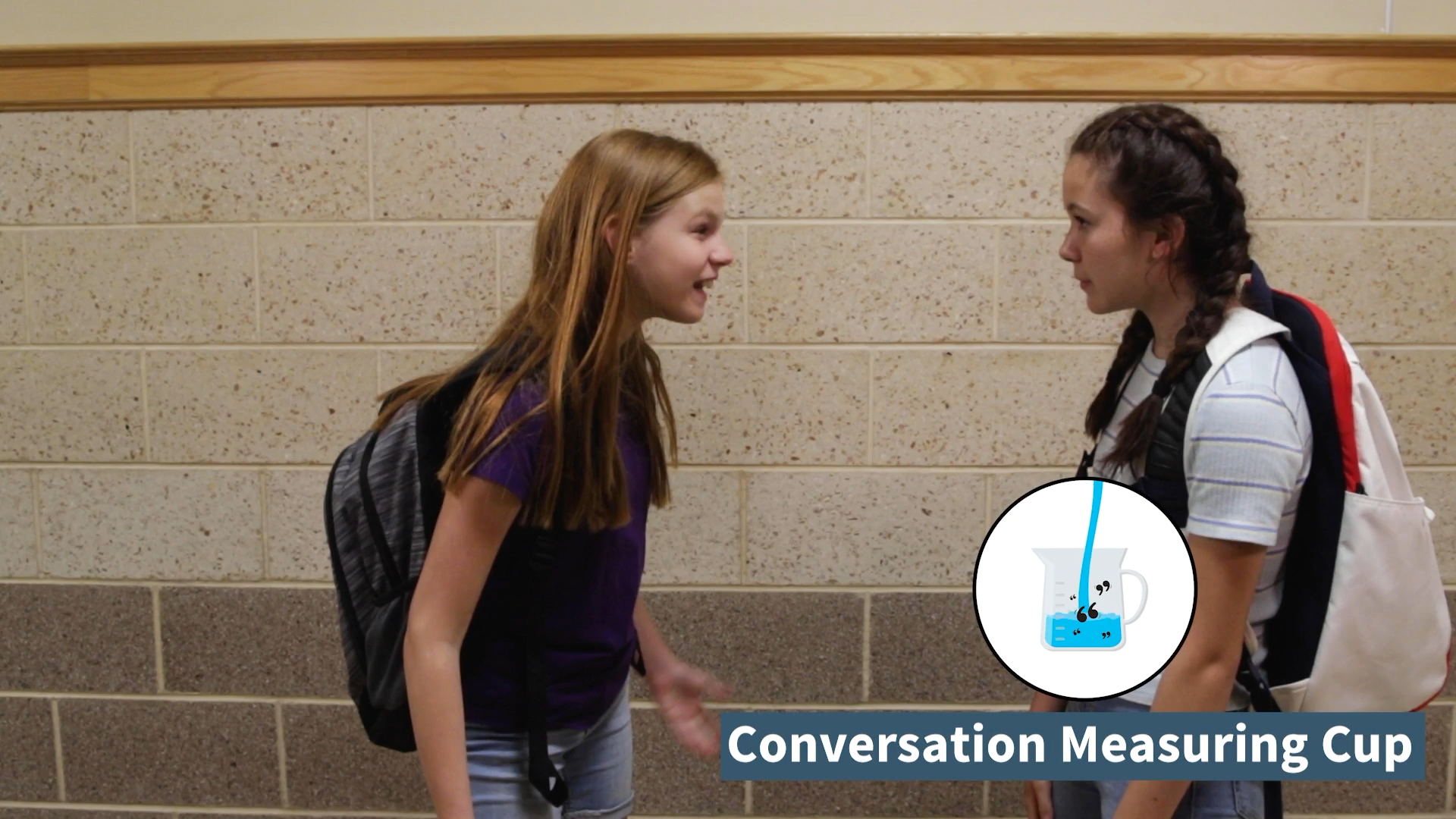
Introduction
As educators, it is essential to teach our students the art of effective communication. One critical aspect of communication is the ability to gauge how much to talk during a conversation, so we don’t say too much or too little. The Conversation Measuring Cup is a useful tool that helps students understand and adapt their conversational responses to different situations. This blog post will provide a no-prep activity, discussion questions, related skills, and next steps to help educators teach this valuable skill to elementary students.
No-Prep Activity: Two Sides Game
In this activity, students will practice using the Conversation Measuring Cup by participating in the Two Sides Game. This game involves students observing and comparing how people act in various situations and determining if they used the Conversation Measuring Cup correctly.
- Divide the class into pairs or small groups.
- Explain the concept of the Conversation Measuring Cup, emphasizing the importance of matching the length of a response to the situation.
- Provide each group with a series of scenarios, each with two different responses (one appropriate and one inappropriate).
- Have the students discuss each scenario and decide which response correctly uses the Conversation Measuring Cup.
- Afterward, encourage the groups to share their answers and reasoning with the class.
This activity helps students develop their ability to recognize appropriate and inappropriate conversation lengths and practice using the Conversation Measuring Cup in various situations.
Discussion Questions
- Why is it important to match the length of your response to the situation?
- How can the Conversation Measuring Cup help improve our communication skills?
- What are some clues that can help you determine how much to talk during a conversation?
- How can you adjust your conversation style if you notice that someone is losing interest?
- Can you think of a time when you used the Conversation Measuring Cup effectively? How did it impact the conversation?
Related Skills
Beyond the Conversation Measuring Cup, there are other essential social-emotional skills that can help elementary students become better communicators and build healthy relationships. Some related skills include:
- Active Listening: Paying full attention to the speaker and showing genuine interest in what they have to say.
- Empathy: Understanding and sharing the feelings of others, allowing for deeper connections and more meaningful conversations.
- Nonverbal Communication: Interpreting body language, facial expressions, and tone of voice to better understand the emotions and intentions of others.
- Turn-Taking: Practicing patience and giving others the opportunity to speak during a conversation.
- Conflict Resolution: Addressing disagreements in a respectful and constructive manner, fostering healthier relationships.
Next Steps
Teaching the Conversation Measuring Cup and related social-emotional skills can significantly impact your students’ communication abilities and interpersonal relationships. To further explore these skills and access free sample materials, visit Everyday Speech’s sample materials page. By incorporating these valuable lessons into your curriculum, you can help your students develop the essential tools they need to navigate the world of social interactions confidently and effectively.

